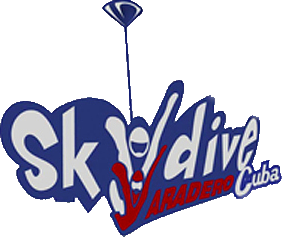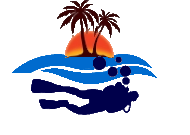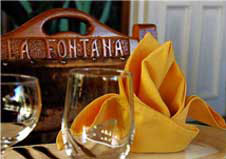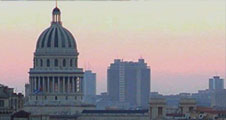Ernest Hemingway's journeys to Cuba
By: Gladys Rodríguez Ferrero | Source: CUBARTE | 05 de June 2009
Today, I would like to deal with part of the life of a man that has been able to continue to be news almost 48 years after his death. About the man who seventy years ago decided to live in Cuba; this is an anniversary that we are celebrating in this month of May.
I am referring to Ernest Miller Hemingway, that very U.S. important writer who, some months before his 28th birthday arrived in Cuba for the first time on the Orita steamship.
It is true that Ernest only passed through in that occasion, but this short time would be reflected in his life as well as in his work. In his passive bibliography, unfortunately, Cuba is still mentioned to fast, maybe in an attempt to diminish the importance that the stay in our country had for the writer.
It was a necessary decision to rest from the fatigues of the journey in a comfortable bedroom of a hotel located very close to the harbour. Pauline, six-month pregnant of her son Patrick would be able to recover. The Ambos Mundos hotel, up to now, was that ideal place.
Let us take together those journeys to Havana. Let us join Hemingway and let us reconsider how many times he decided to return over and over, till deciding, in 1939, to have his definitive residence here and, later, in 1940, to buy Finca Vigía.
In March, 1929, Hemingway, Pauline and their sons Jack and Patrick leave from Key West to Havana . They stay in our Old Havana from March 16 to April 5, the date when they travel to France. Let us consider this one as Ernest´s second trip to Cuba.
On January 10th, 1930 they leave to the United States on La Bourdonnais . They arrive in Havana on January 22 nd. Another short stay and once more back to Key West, a place in which he had established residence from 1928 on. That would be then the third journey or the third meeting of Ernest with Havana.
On May 4th, 1931, he travels from Havana to Spain and France, on the Volendam. Here is his fourth stay.
On April 21 st, 1932, we surprised Hemingway on a fishing trip. Now the stay won´t be so short. He will spend two months at the Ambos Mundos Hotel. His fourth journey.
Hemingway takes this crossing on the Anita. The ship that was the property of Joe Russell, also owner of the Sloppy Joe´s, docked at the Arsenal Wharf . What had been planned to be a ten-day stay becomes a two-month stay. On the Bud White , Charles Thompson and Joe Russell. People come and go. So appear Grant and his wife Jane Mason; Carol, Ernest´s sister, and Bra Saunders.
They all stay at the Ambos Mundos Hotel where a bedroom with a bathroom alone costs only 2.00 pesos daily, and also has an excellent view of the Havana Bay and its Cathedral.
This is one of the moments that he dedicates to fishing the marlin with Jane Mason, a fact that arouses jealousy in his wife Pauline. It is also said that he dedicated afternoons to revise the drafts of Death in the afternoon , which would be published in September that year, by Scribner´s.
He travelled once more to Havana at the beginnings of September of 1933. His fifth journey. He stays, as usually, at the Ambos Mundos. Charles Thompson, Joe Russell and Grant Mason travel too. This crew appears in Hemingway´s binnacle correspondent to 1930-1934, preserved at the Ernest Hemingway Museum of Cuba.
Gerardo Machado and the dictatorship, the abuses committed against the population, the tortures, the death of young people opposed to the tyrant. Hemingway takes interest in the Cuban press of the time and asks the journalist Dick Amstrong, of Havana Elegant, to keep him updated and send him as much information as he can gather. Hemingway spends 65 days fishing in our seas. The writer makes the best use of that time, takes notes of his experiences as fisher of swordfish.
On August 4th, 1933 , the Hemingways return to Havana . The dictatorship of Gerardo Machado continues. The tyrant staggers in power. He is overthrown. A lot has been said about the passion aroused, in this period, between Ernest and Jane Mason. But the binnacle of the Anita , what was published by the Havana Elegant and some letters, according to Reynolds, hints that Hemingway had little time for adultery in that stage.
Ernest, his sons John and Patrick, Pauline and her sister Jinny Pfeiffer stay at the Ambos Mundos. They spend three days in Havana . From the Hotel they can see the streets during the final days of the dictatorship of Machado. They see and listen to the explosions of bombs, the strikes the absence of busses and cars on the streets, the lack of activity in the harbours, the lack of food. The city is paralyzed. The cavalry patrols the city with long weapons.
Hemingway begins, however, what will be his Section for a while at the Esquire Magazine and begins Letters from Cuba , in August that year, with the publication of Marlins off the Morro . They leave to Spain on August 7th . That would then be this sixth journey to the Island .
On July 18 th , 1934 he travels on his new Pilar to Havana , as it is recorded in the start permit authorizing him to travel from Key West to the Cuban capital city. Hemingway had obtained a licence as a Ship Captain on April 26 th , 1934 . This is then his first crossing to Havana as Captain of the ship, the first journey of the Pilar to Cuba , and the seventh of its captain to the Cuban archipelago.
He docks the ship in the San Francisco Wharf . It seems that they slept the first night on board. On July 20 he stays at the Ambos Mundos Hotel and on the 21st he celebrates his 35 birthday. On the 22 nd they would celebrate Pauline´s 39 th birthday.
Who travelled on the Pilar ? Charles Lunn, who, once in Havana , is replaced by Carlos Gutiérrez, the first captain that the Pilar had. Arnold Samuelson, who was 22 at the time and whom Hemingway has allowed to learn to write with him. Sydney Franklin, the first U.S. bullfighter, friend of Hemingway and the one who teaches him about the bullfighting art, and also one of his greatest supports in the Spain of the Civil War.
Who will board the Pilar in this first stay in Cuba ? Antonio Gattorno, the Cuban painter and his wife Lilliam; López Méndez, the Venezuelan painter and his wife; Dick Amstrong, the journalist of Havana Elegant, among others.
We had said that on July 22nd , they celebrate Pauline´s birthday at the Ambos Mundos, and she left to New York on July 27th . That same day Jane Mason arrived in Havana. Between July 27th and August 25th Pauline comes to Cuba four times. Without a doubt, she senses the infidelity of Ernest, she is jealous of Jane Mason.
In this stay, the first month is frustrating for Hemingway; fishing has been almost zero. Not a single marlin. How ever, one month later he has already added 300 words to this manuscript about the kudu hunting. We know that Hemingway is writing Green hills of Africa. And he does it at the Ambos Mundos.
He publishes One trip Across in the number corresponding to April 1934 at the Cosmopolitan Magazine, the work that would later become the first part of To Have and Have not.
During this time Sydney Franklin is interviewed by the Cuban press, he gives lectures about bullfight and makes presentations in the radio. A cape belonging to this U.S. bullfighter rests on one of the furniture pieces of Finca Vigía, just at the office of the writer. Hemingway returns to Key West on October 26 th.
On April 24, 1936 , he travels again to Havana on the Pilar and spends one month fishing in Cuban waters. This is Hemingway´s eighth trip to Cuba . Sarah Murphy, Kate and John Dos Passos are invited by Hemingway, on May 4 th , to travel to Havana . They have dinner at the Ambos Mundos Hotel. On May 5th, Ernest goes with them to the house of the Mason in Jaimanitas. On the 7 th Jane Mason, Sarah, Kate and John Dos Passos return to the United States.
Also in May, Pauline spends ten days in Havana and returns to Key West. She alerts Ernest about the bad weather. There a storm coming with strong winds. Hemingway spends five days at the Ambos Mundos waiting for a better weather. Finally, believing that the fair weather he enjoys in Havana is a proof that the weather has improved he leaves on the 27th at eleven in the evening.
Hemingway spends a terrible night: low clouds, strong winds, high tidal waves. The first battering surprises him three hours after leaving Havana . He has to change the curse. He overcomes and arrived in Key West exhausted.
The Spanish Civil War is at its height. The siege of Madrid is daily news in the Cuban press. Hemingway is trapped. He can not abandon his participation in that war conflict. He also has problems with Pauline. She is a catholic. Their marriage was a catholic one. However, Franco´s fascists are supported by the Catholic Church. Maybe these are some of the causes that affect the continuity of his work in this period.
On January 29 th , 1938 he travels on the Pilar to Havana once more. It is the period of the Spanish Civil War. The Republic is lost. Here is the ninth journey of the writer to the Island.
In this convulsed period of 1938 Hemingway writes without a stop. He publishes The old man at the bridge in the Ken Magazine. He makes the transcription of the narration of the documentary film Spanish Earth that is premiered in June that year. The fifth column and the First Forty-nine stories is edited for the first time, as well as The Denunciation and the excellent story The butterfly and the Tank.
The tenth journey of the writer took place on February 15 th , 1939. He took the P&O Ferry to Havana. His marriage with Pauline comes to an end but it will still take him some time be convinced about it.
He arrives in Havana with five completed new stories about the Spanish Civil War and one that takes place in Cuba . Hemingway thinks that they will be some of the best stories written by him, according to a letter written to Max Perkins that same year. He passed by the Ambos Mundos and picks up the letters from Pauline and Max Perkins. However, stays at the Sevilla Biltmore Hotel.
Meanwhile, Hemingway takes possession of his room at the Sevilla. He takes provisions to the room. Hemingway doesn´t want to stop his creative work for having to eat.
He only needs his type-writer and a good amount of paper. He writes, he revises the typed pages, he makes corrections. He works, without a doubt, in the first pages of For whom the bells toll.
Hemingway will say two months later that the best way to find peace to write is “to tell everybody that you are staying at a hotel while you stay at another one. Once they trace you, change country”. While all this happens at the Sevilla Biltmore, the letters that he sends to Pauline are sent from the Ambos Mundos. But, according to Reynolds, the manuscript of For whom the bells toll , he says that it was first written at the Sevilla-Biltmore.
After staying five weeks alone at the Hotel in Havana , Hemingway returns to Key West to meet his son John who has gone to spend vacations with him. It coincides with the arrival of other visitors: Sarah Murphy and her daughter Honoria, Ben Gallagher and Jinny Pfeiffer, the sister of his wife Pauline.
Hemingway writes to Max Perkins telling him that he has almost finished the draft of the two first chapters of the novel; that he is revising them. And he adds that he “will return to Havana to complete the novel because it is a wonderful place to work: you are not phoned, nobody disturbs you; nothing interferes”. He ends up by telling him that “private problems have no importance because there is nothing more important than writing”. His mood changes quickly, he gains weight, he is happy.
On April 5th he takes the Pilar, he goes deep into the Gulf and returns to Havana It is then than he meets Martha Gellhorn, who joins him at the Sevilla-Biltmore at the beginnings of April. She will become Hemingway´s third wife.
It is Martha Gellhorn who discovers Finca Vigía, in San Francisco de Paula. On May 17th they already live at the Finca. On December 24 th, 1939 Ernest takes all his belongings at Key West and travels definitely to Havana, the place where he establishes his residence and lives till July 25 th, 1960.
What makes Hemingway leave the place where he has been so happy, where he has written his best works, where all his books are, where he has friends, his animals and his Finca? We all know, or we have at least read about it.
His love for Cuba never changed. He loved Finca Vigía till the moment of his death. He felt passion and gratitude for Ambos Mundos and also for the Sevilla-Biltmore. He longed for Havana till the day he decided to take his own life. Hemingway´s communion with Havana , with the hotels Ambos Mundos and Sevilla-Biltmore, and mainly with Cojimar, with Finca Vigía, with its seas and with its people is indissoluble.
Hemingway was able to love Cuba very deeply, to write in Havana the most important and mature work of his life. He was able to create a style that, in the words of Senel Paz, marks everyone and recognizes none.
Bibliography
Díaz Quintana, Rosalía: El Yate Pilar cuenta su historia. Lecture. 11th International Hemingway Colloquium. Havana , June, 2007.
Oliver, Charles M: Ernest Hemingway A to Z. The essential Reference to Life and Work . Checkmark Books, New York , United States , 1999.
Reynolds, Michael : Hemingway: The 1930´s W.W. Norton & Company . New York-London, 1997.
Rodríguez Ferrero, Gladys: Hemingway descubre La Habana. International Lecture organizad by the Hemingway Cátedra. “José Martí International Journalism Institute, Havana, 1998.
Samuelson, Arnold: Havana 1934: Summer with E. Hemingway. The Reader´s Companion to Cuba . Editor Alan Ryan. Harcourt Brace & Company. San Diego - New York - London , 1997.
Young, Philip: Ernest Hemingway: Reconsideration . The Pennsylvania University Press. United States , 1966.
Translation: Yusimí Rodríguez (Cubarte)























